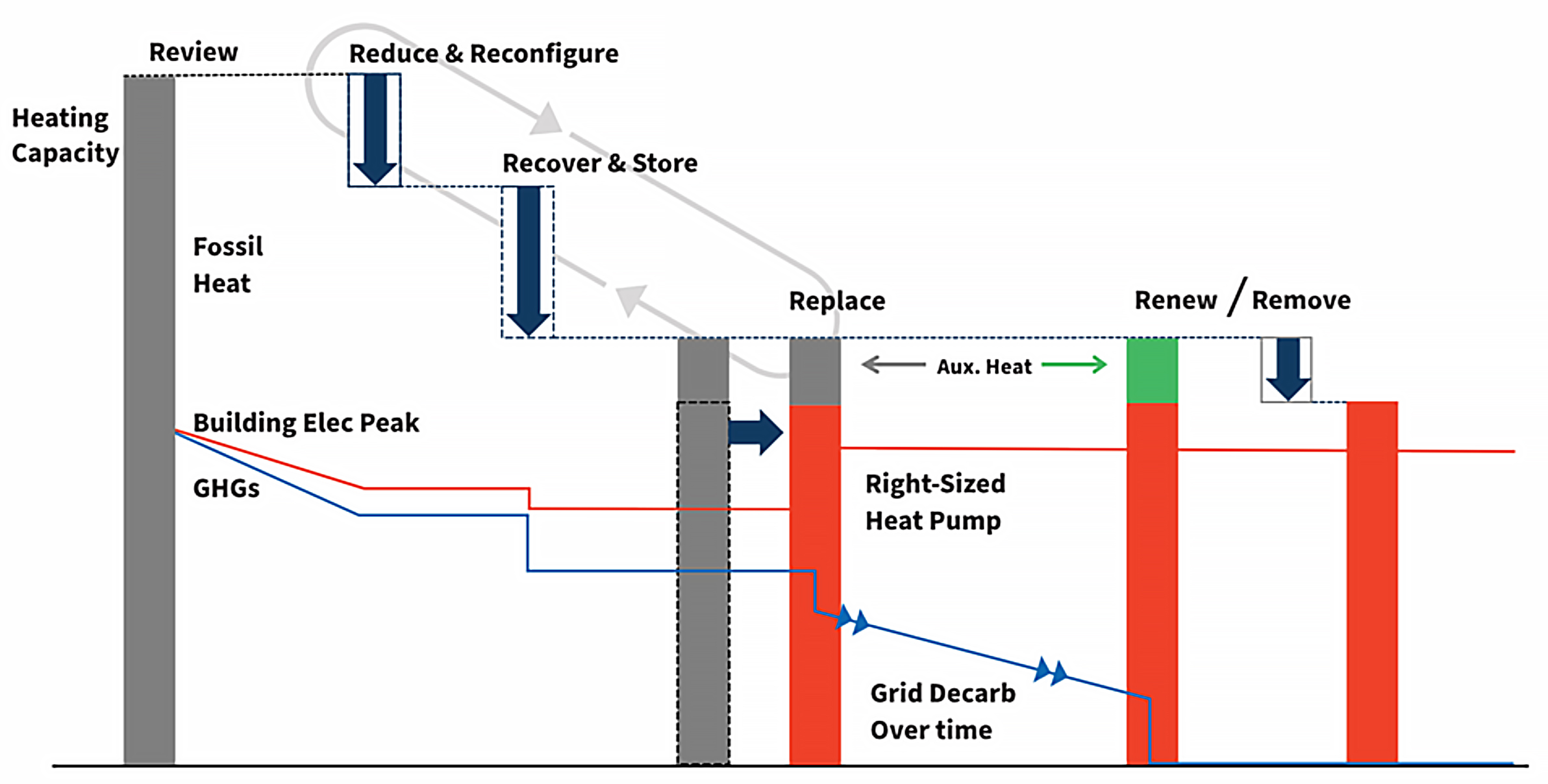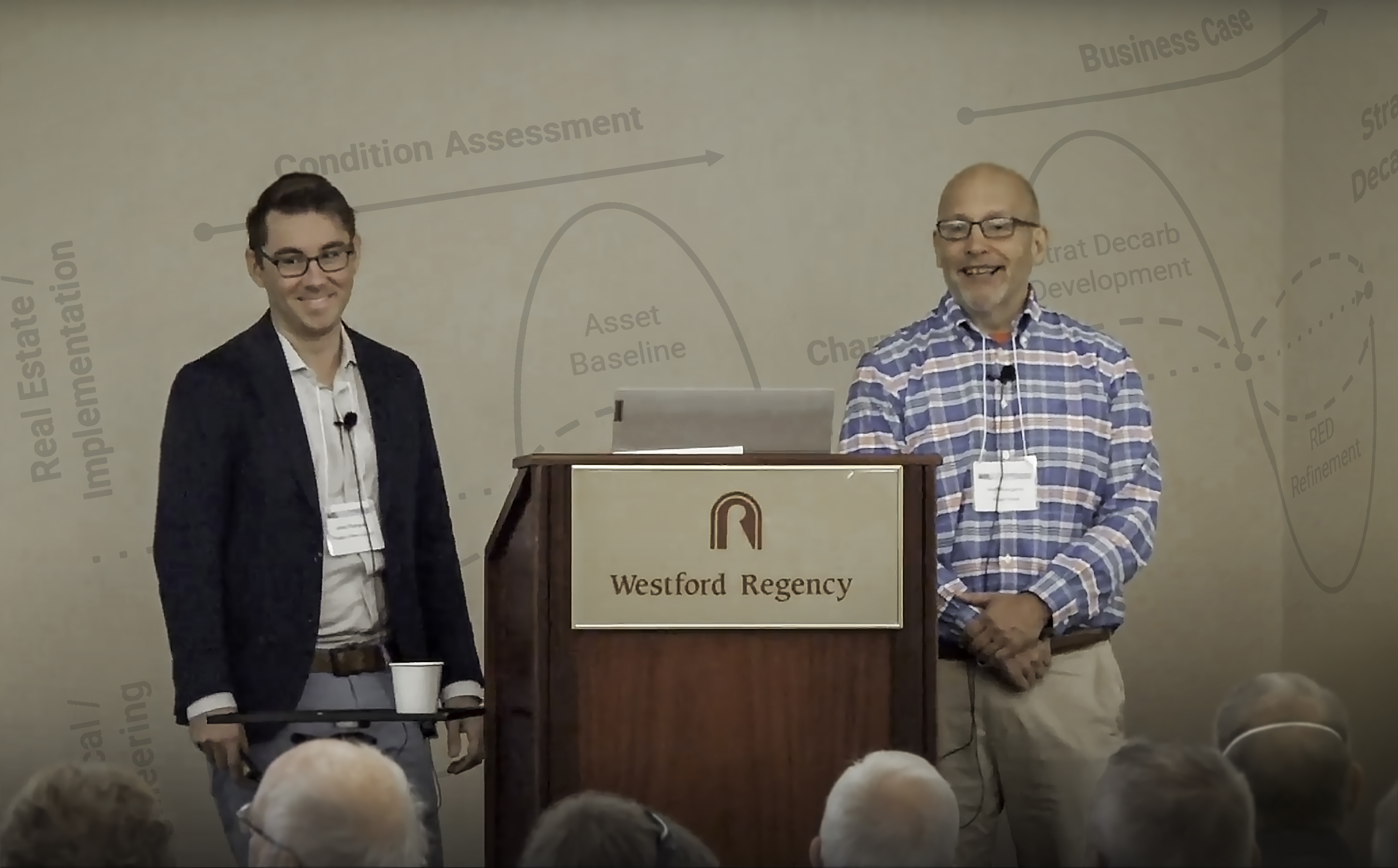Efficient electrification and decarbonization has been a focal point in the AEC industry for some time now. Cities and states have been making it a priority by upholding certain standards and committing to laws, regulations, and fines that can help neutralize the amount of carbon that is being used in the building process.
The commercial and residential built environment is responsible for 13% of all carbon emissions in the U.S., and the plan is to strive for reaching climate neutrality and near zero energy. The future is the most important aspect of the discussion, and setting a goal is something that everyone in the industry should want to contribute towards. Mark Kleinginna and Jared Rodriguez talked more about setting a goal, and the way to start working towards that goal in their presentation during the Building Science Corporation's Twenty-Fourth Westford Symposium on Building Science.
Achieving complete decarbonization by 2050 is possible, but it must start now by eliminating fossil fuel fired heating in existing buildings. The question becomes how to start on the path to doing this?
In a high-electrification scenario, high performance buildings, good design integration, and heat networks work at electric capacity. It won’t be an instant flip, but over a 30 year period, one of the first steps is using unmitigated air source heat pumps (ASHPs). These drive up peak winter month electric consumption by almost 50%, as well as cause the winter peaks to triple the summer electric peak, according to the presentation.

ASHPs are a big part of the puzzle when it comes to decarbonization and electrification. However, they may not be completely efficient when it comes to meeting peak heating at scale.
Developing A Thermal Dispatch Model With A Technology-Agnostic Approach
Another way to enable decarbonization inside buildings is by developing a Thermal Dispatch Model and having a technology agnostic approach.
Decarbonization Pathways Include:
- Energy Efficiency
- Demand Reduction
- Thermal Storage
- Thermal Energy Network Connections
- Fossil Fuel Phase-out
The idea is to develop a model in which one can have a technology agnostic approach and rank these decarbonization pathways for a specific building, campus, neighborhood, or even an entire city.
The current way of thinking about decarbonization isn’t effective because the approach is to “electrify everything as soon as possible.” This way of thinking won’t get us to the goal of decarbonization because it doesn’t look at the full picture.
Sure, it may work at first, but it’s important to consider the cost of going about it like this. Will it be as efficient? How long will it work? Have we considered all the resources possible? These are all necessary questions because they consider the full impact electrifying everything as soon as possible could have, negative or positive.
The way the industry should be thinking or the evolved way of thinking is doing deep decarbonization by:
- Reducing or eliminating combustion
- Increasing efficiency at low design temperatures
- Remaining resilient during extreme weather conditions
- Using solutions that are energy grid-interactive
- Reducing thermal waste by recycling as many thermal flows as possible
- Incorporating realistic strategies by optimizing and scheduling phase-in of low carbon retrofits
- Providing transparency to all stakeholders
- Integrating heart pump and storage technologies in a heat source/cost optimized thermal dispatch
Developing Thermal Energy Networks
Another way to enable decarbonization is by working outside of the building by developing thermal energy networks as public private partnerships to phase out fossil fuels for heat. This means building a community-based coalition and infrastructure development fund by partnering with agencies, utilities, and local businesses.
It’s important to work with municipal partners in order to authorize the construction of thermal energy networks. The construction and finance of thermal energy networks is to be completed while making sure customers are being acquired that seek affordable, secure, and clean heat.
Coalition members may include state and local regulators, policymakers, economic and industrial development agencies and organizations, public and private regulated utilities, activist and community based organizations, trade unions, and trade organizations.
Thermal Energy Networks
- Fossil fuel heating will be replaced with electric heat pumps over the next 30 years
- ASHPs will become insufficient at temperatures below 35 degrees F and having enough for capacity design day is unaffordable
- Average temperatures are increasing, but so are extreme high and low temperatures
- Heating becomes more efficient by using water source heat pumps and thermal storage
- Thermal Energy Networks use a heat transfer fluid (usually water) to carry heat to and from healing and cooling nodes (aka building and industry)
- Thermal Energy Networks allow for the efficient trading of heat energy between sources and sinks enabling recovery of waste heat
- Network heating and cooling sources include energy from combustion, geothermal, waste heat, storage facilities, latent heat, and beyond. Thermal Energy Networks are also technology agnostic
- Locally produced heat is secure and price stable
It’s important to understand that no building is the same, and there’s no one solution for every building type. Different things work in different buildings when it comes to electrification. However, developing an approach and mindset that can be the foundation to electrification/decarbonization in every building is the way we can all at least start on the right path.
To view the presenters' 28-slide PDF, click the download button below.






